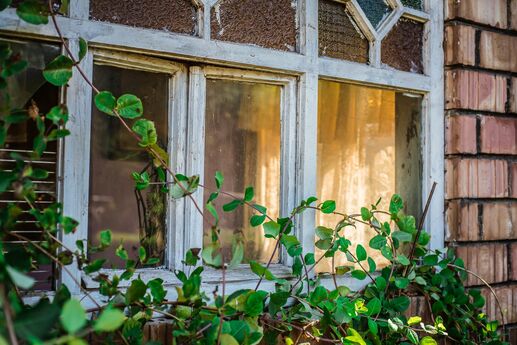
With its blustery winds, freezing rain and heavy snowfall, winter can be extremely unkind to the exterior of your home. Rain, snow and ice are the main contributors to exterior damage. Identifying and making repairs to the damaged areas quickly can help prevent problems from getting out of control before spring. This will not only protect you and your home, but also minimize the costs associated by avoiding the need for any major home repairs.
Check your Gutters
As water freezes in your gutters during winter, it expands, wreaking havoc on the entire system. The most common culprit leading to gutter damage is the failure to keep gutters free of leaves. Leaves restrict the flow of water, allowing it to linger in the gutters. As the water freezes, it expands, stretching these thin channels to their limits and leading to ice dams on your roof. Because the weight of the ice is too much for the gutters to handle, this often leads to sagging or detached gutters. Prevention is the only solution, so check your gutters for any lingering leaves that can cause problems and remove them immediately.
Inspect the Roof
Your home’s roof takes the brunt of Mother Nature’s winter fury. Ice and snow can cause the shingles to crack or detach from the roof, leading to water damage inside your home. Although there is not much you can do after your roof becomes covered in ice and snow, addressing any problem areas before a storm or deep freeze can help to eliminate interior damage. Check your roof and repair any curled, cracked or broken shingles. Replace missing shingles and glue down loose ones with a high-quality roof cement.
Fix the Fence
The purpose of a wooden fence is more about privacy than true land protection. As such, these types of fences are not built to withstand piles of drifting snow. The weight of the snow is often just too much for the fence to bear, leading to leaning or downed fences around your property. Try to spot weak areas in the fence and repair posts or slats. Be sure to clear the bottom of the fence because salt from the road, plus the moisture of snow, can wreak havoc on wood.
Re-caulk Windows
Poorly caulked windows allow heated air to escape, which increases your energy costs. They can also lead to wood rot around the window frame since it allows moisture to creep into the substrate. If you notice a window draft, wait for a dry, warm-ish day and re-caulk the windows (be sure to scrape out the old caulk first). It’s a quick, easy and inexpensive repair that nearly anyone can do.
Repair the Driveway
The harsh conditions of winter take a heavy toll on your home’s driveway. Because of the expansion and contraction of snow or ice, small cracks and crevices can turn into large ones very quickly. Choose a day that is warm enough to be outside for a bit and repair cracks with a sealer designed for your type of driveway. Sealers can be bought at your local hardware store — but be sure to adhere to the directions, especially the appropriate outdoor temperature for a proper seal.
